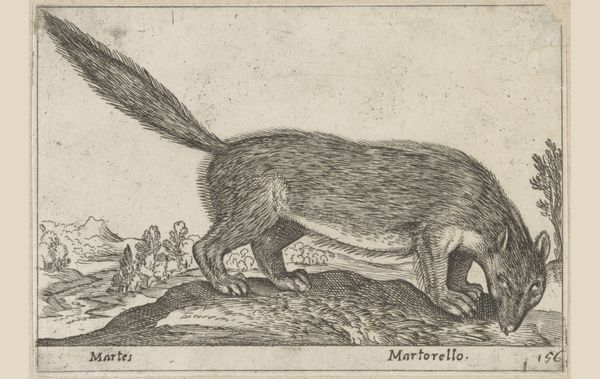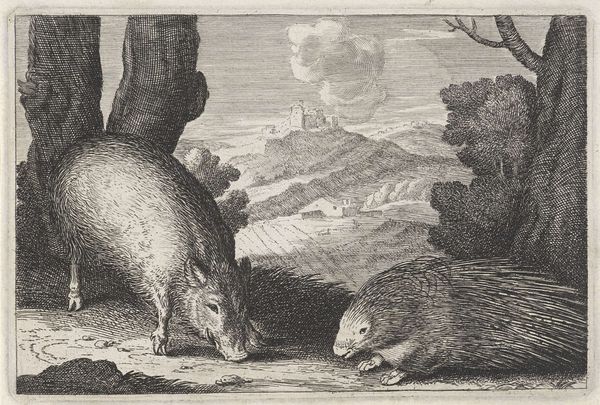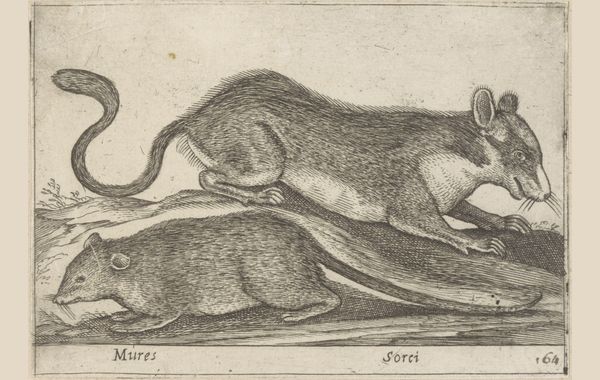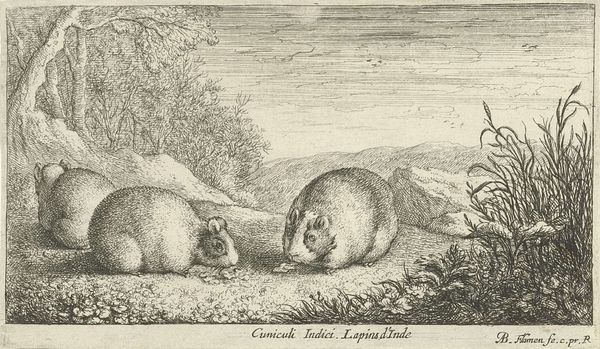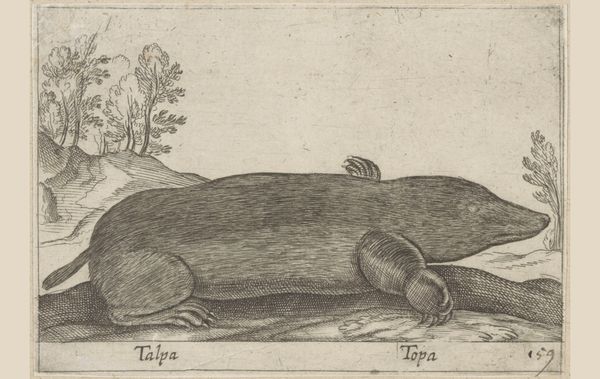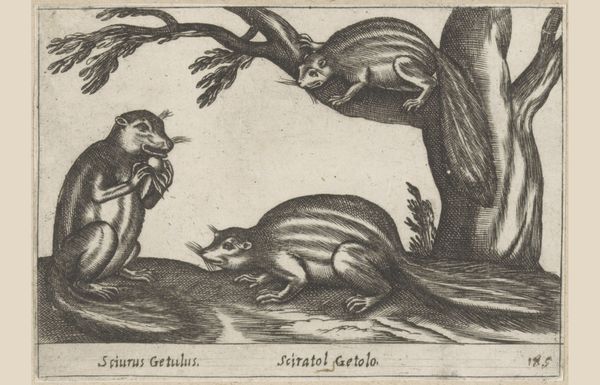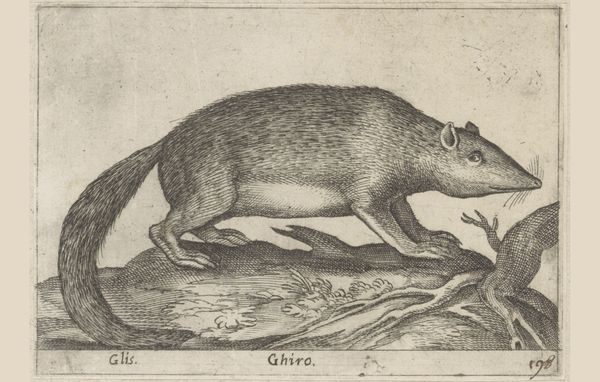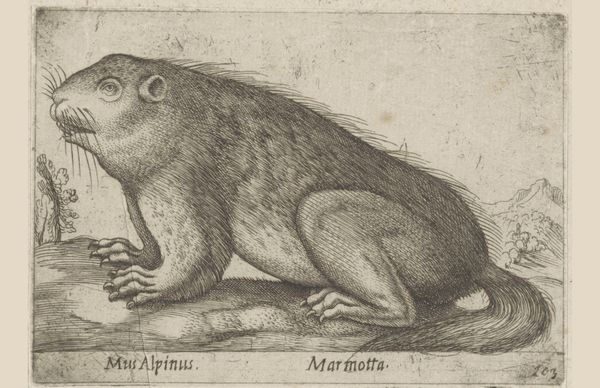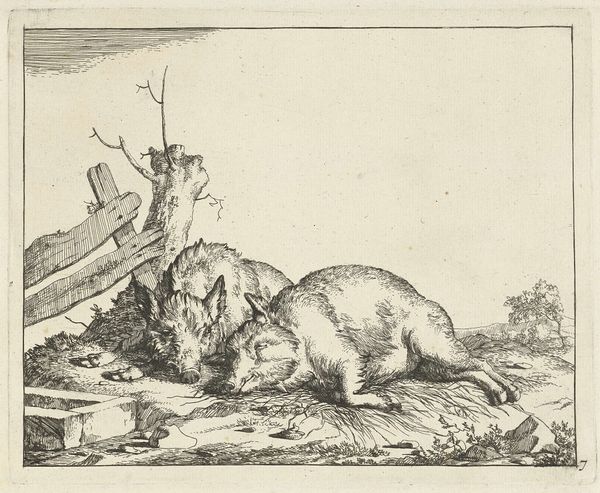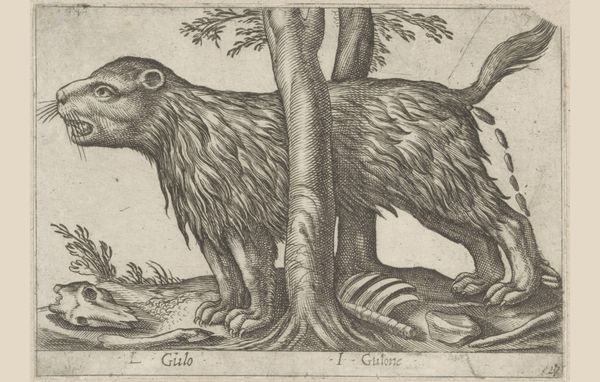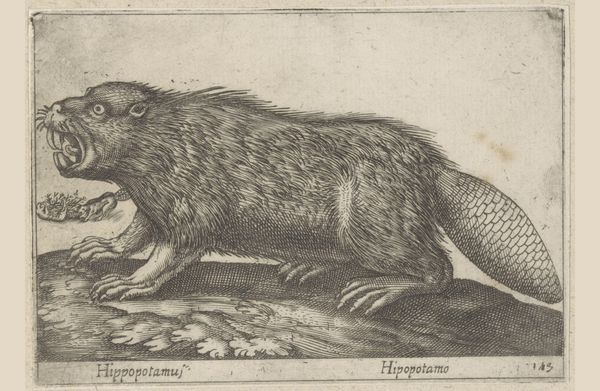
drawing, print, engraving
#
drawing
#
animal
# print
#
landscape
#
11_renaissance
#
engraving
Dimensions: height 95 mm, width 137 mm
Copyright: Rijks Museum: Open Domain
Editor: Here we have Antonio Tempesta’s "Muskusrat," an engraving dating back to before 1650, residing at the Rijksmuseum. What strikes me immediately is how meticulously each line contributes to the overall form, giving it a wonderful textural complexity, almost tactile. What do you see when you look at this piece? Curator: This work excels in its strategic manipulation of line to create depth and form. Consider the engraver's burin, methodically excavating thin lines into the copper plate. This is not merely representation; it's a process of subtraction that constructs an image of remarkable density. Note the sophisticated cross-hatching; the directional changes alter how light reflects and creates an illusion of three-dimensionality. The artist is deeply engaged with the technical demands of the medium, manipulating line and form to shape the composition and texture. Do you observe how Tempesta uses line variation to define the muskrat’s body versus the trees, differentiating their material qualities? Editor: I do. The density of lines on the muskrat contrasts greatly with the more vertical and spaced lines on the tree trunks, emphasizing volume and texture versus verticality. Does this then create a kind of hierarchy, where the subject—the animal—is prioritized through technique? Curator: Precisely! It showcases an intentional visual stratification. But observe further; beyond the animal's detailed representation, Tempesta establishes depth using precise methods: varied densities, line weights, and carefully considered forms. Consider the trees; do they act solely as background elements? Or, do they contribute to a holistic formal balance? Editor: I think they offer stability, anchoring the composition and providing a sense of scale for the muskrat itself. It seems both the texture and depth arise from this relationship between form and technique. Curator: Precisely, our eyes actively piece together form through lines, perceiving textures and three-dimensionality that exists because of skillful marks. Editor: Seeing how much deliberate work is hidden within those little lines has given me a completely different view of older prints!
Comments
No comments
Be the first to comment and join the conversation on the ultimate creative platform.
